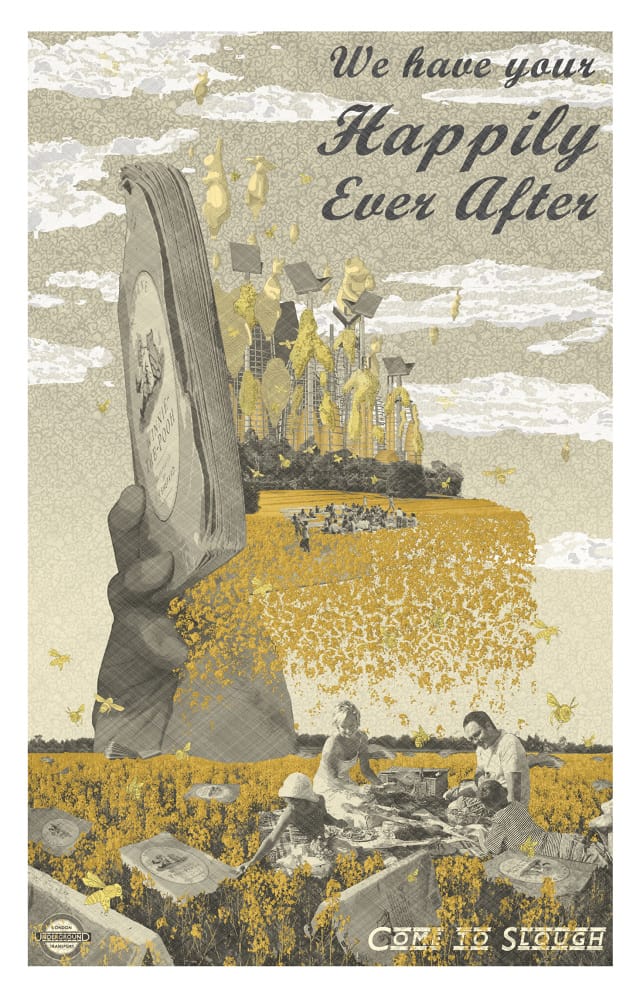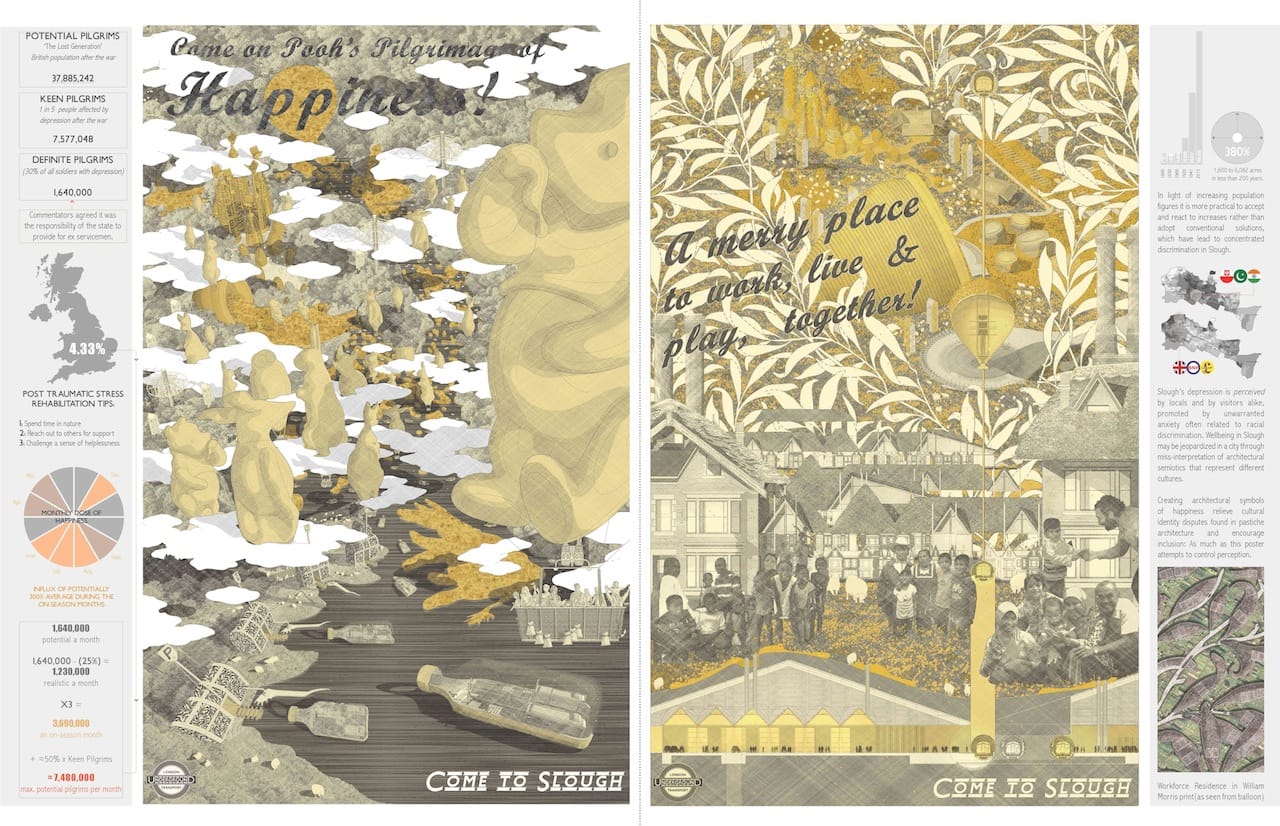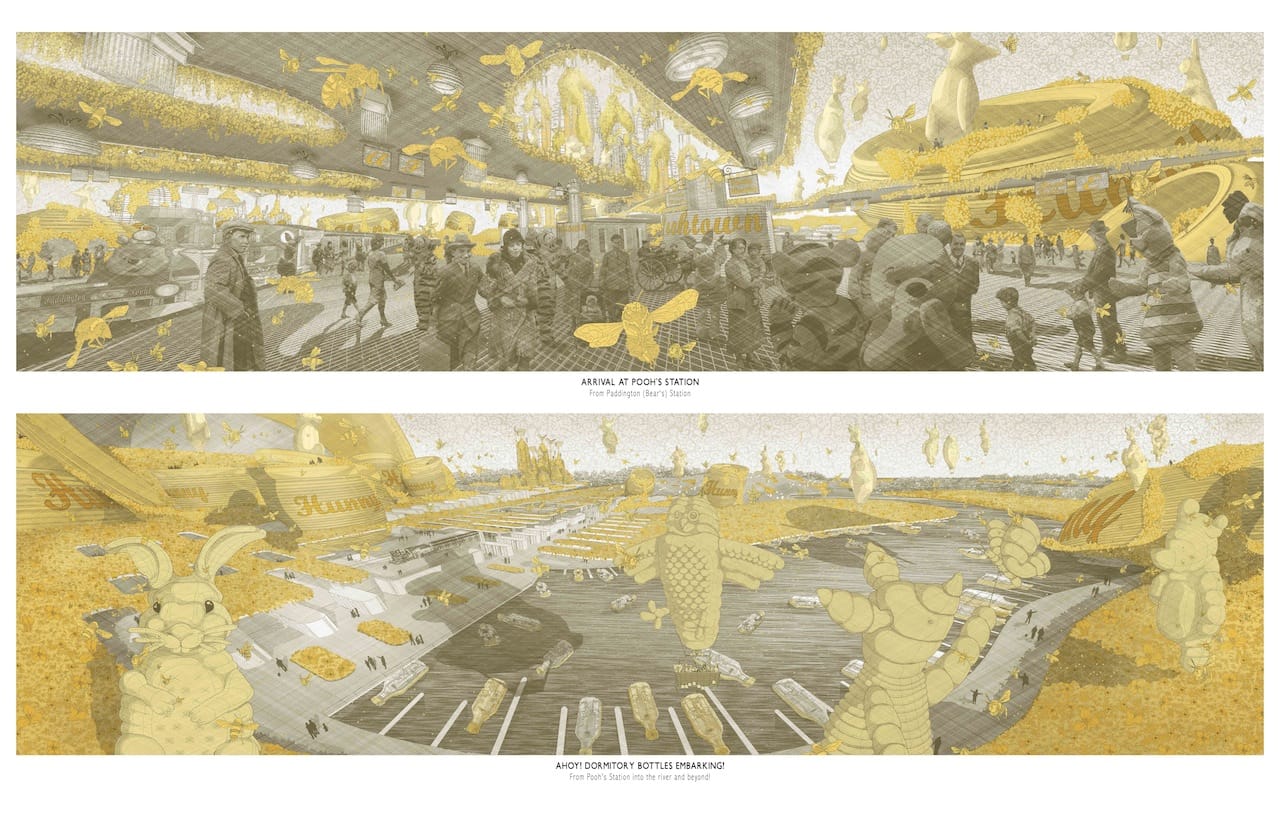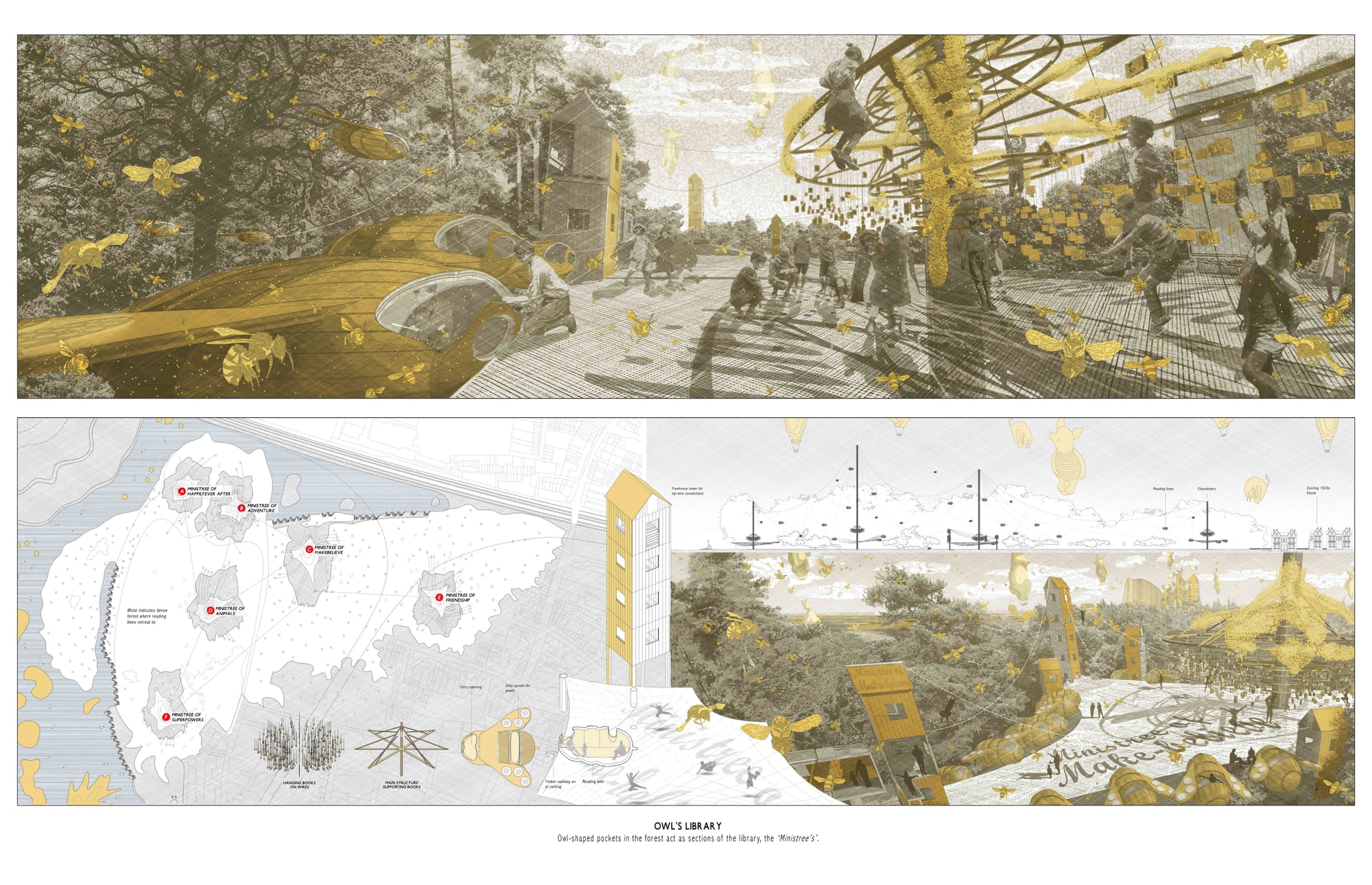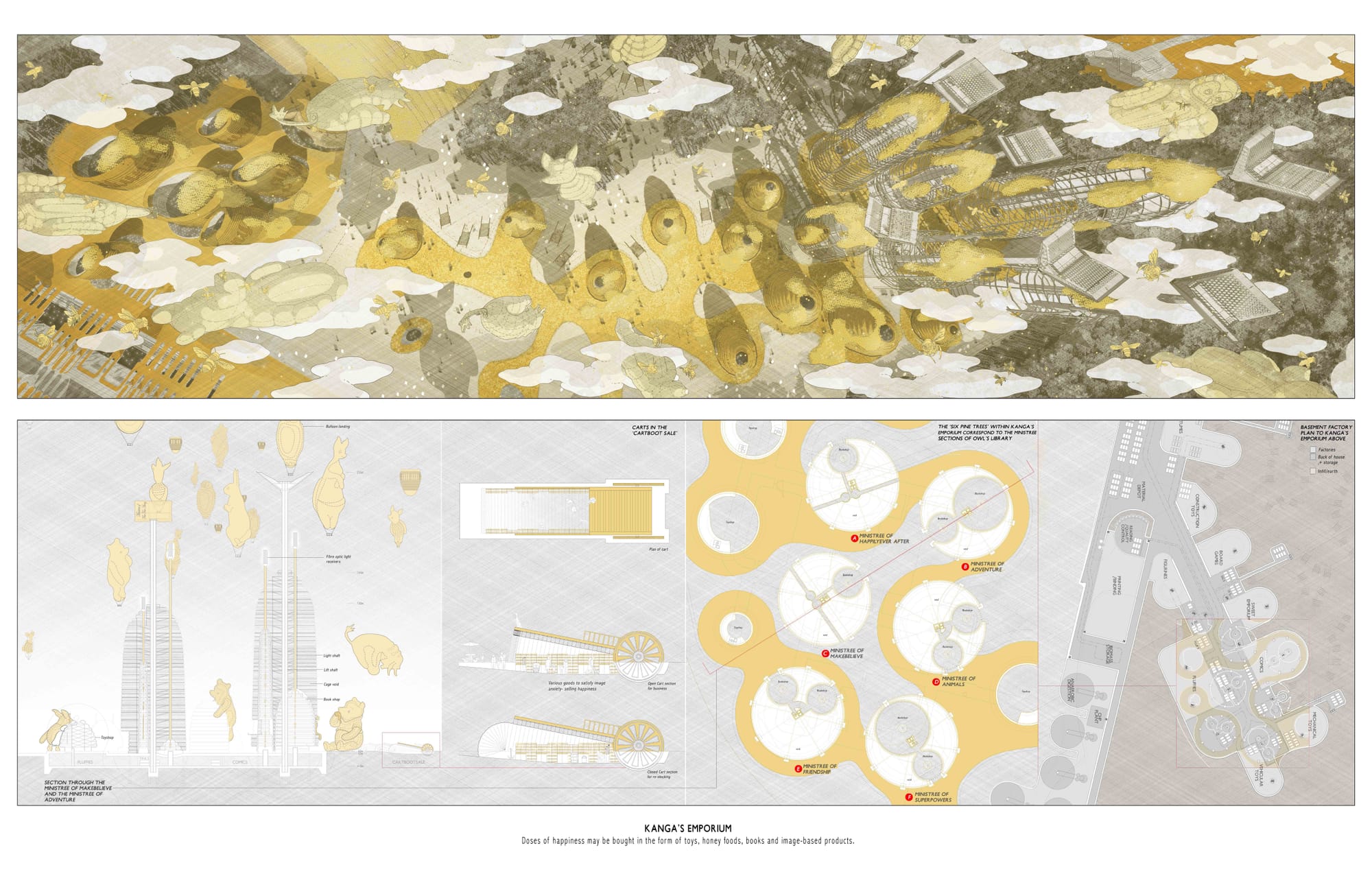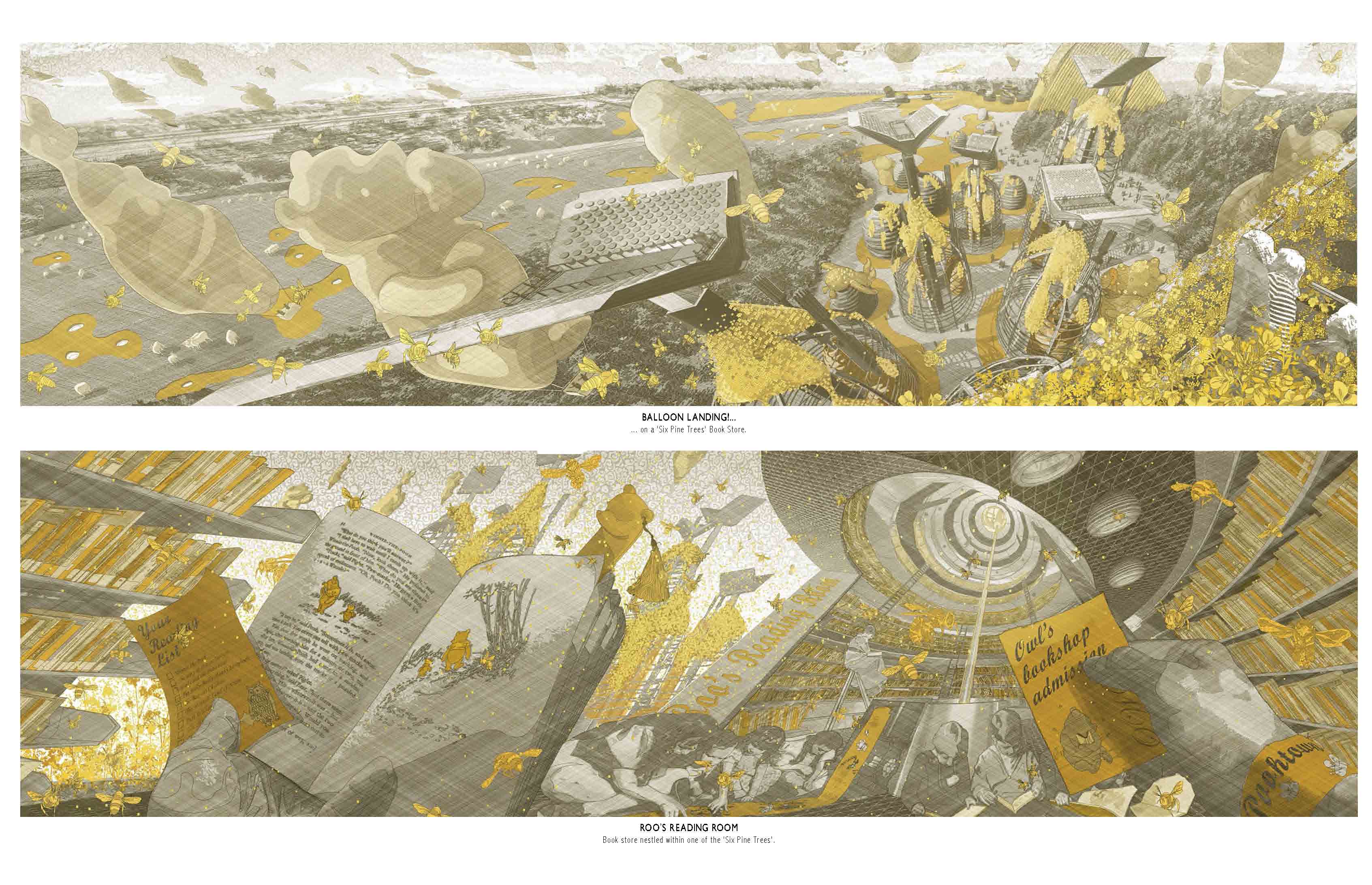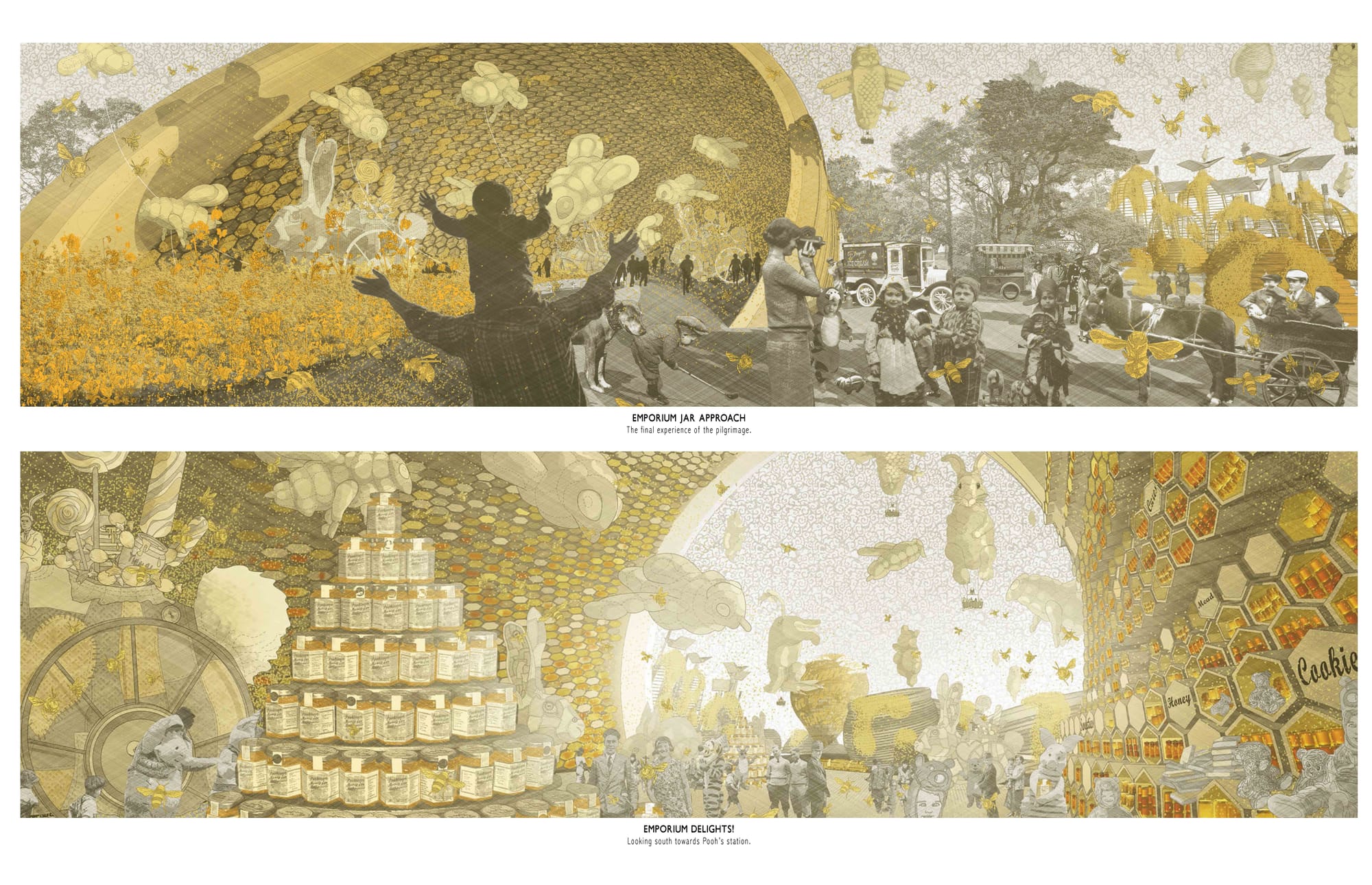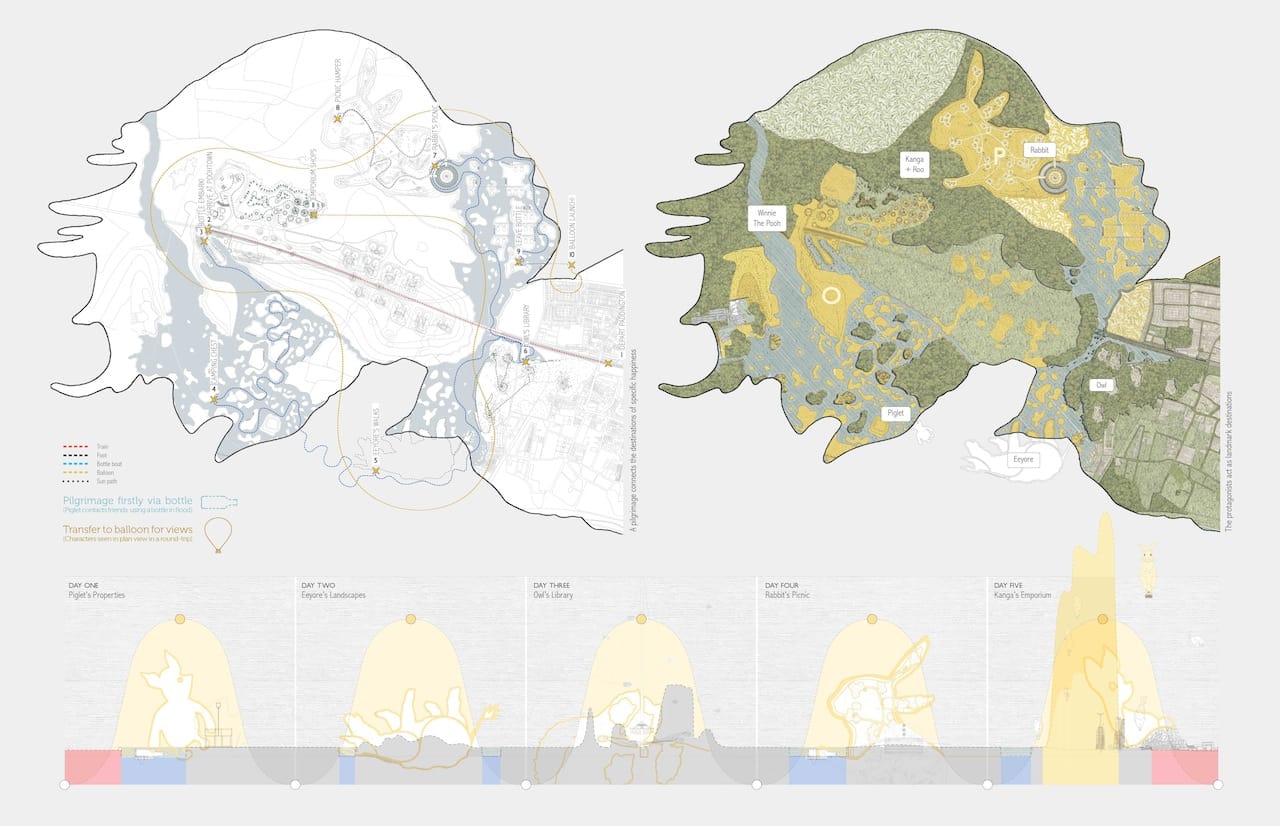Transforming an Industrial Town into a World Fit for Winnie the Pooh
When most people think of Slough, England, they picture the drab, industrial setting for Ricky Gervais's British television show The Office.
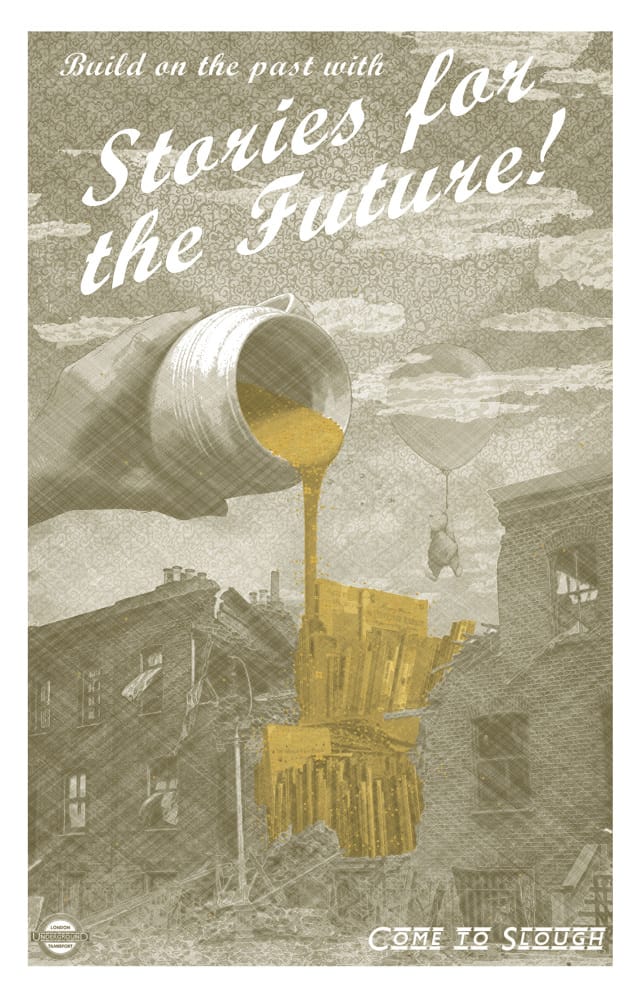
When most people think of Slough, England, they picture the drab, industrial setting for Ricky Gervais’s British television show The Office. But the city’s unpopular image goes back to at least 1937, when the poet John Betjeman pronounced it unfit for humans. More recently, the writer Erik Weiner described it as “a treasure trove of unhappiness, buried beneath a copious layer of gloom.”
When local officials tried to rebrand the city in 2008, the move was met with skepticism; by 2010, its quality-of-life ratings were still among the lowest in the UK. “The problem with Slough is that it’s the town that work built,” Dan Kiernan wrote in the Telegraph. “The best places to live in Britain are the ones moulded by the values of life, not work.” Did that mean better design could make Slough a more pleasant place to live? Would its citizens be happier if planning officials focused on urban projects meant to enhance well-being?
Those are the kinds of questions that Bartlett School of Architecture student Nick Elias wanted to explore when he created his imaginative series Poohtown. The project is a thought experiment that appropriates the language and form of tourism posters to envision an idealized, fictional version of Slough where Winnie the Pooh and his friends would feel right at home — the sort of place outfitted with a “balloon landing” and a “Ministree of Make-believe.”
“[Poohtown] enables the potential of a happily-ever-after to be explored beyond the limitations of Slough’s industrial sprawl ambitions,” Elias explained in a description of the project, which has since won a 2014 Silver Medal from the Royal Institute of British Architects and also been nominated for a 2015 Archiprix International award. “It also philosophizes over today’s cities’ potential to prescribe policies of happiness alongside familiar amenities, a concept worryingly absent in today’s city planning.”
The project proposes the construction of several new buildings in Slough, including an embassy that would manufacture maps “to ensure a sense of place” and a Working Mens Club that would harvest and produce “honey-based products.” It also suggests specific policies to govern the city — like conserving and maintaining its original 1920s architecture, or building low-rise neighborhoods that still contain iconic landmarks. Several of the posters invite unhappy pilgrims to sightsee at feel-good destinations like “Piglet’s Properties,” “Eeyore’s Landscapes,” and “Rabbit’s Picnic,” where they might find their mood strangely lightened.
“I believe we feel ‘Architecture’ in many ways; not just through the physical environment but how this environment makes us emotionally feel,” Elias told Hyperallergic. “PoohTown proposes it is more sustainable to design infrastructure for an emotional state.”
